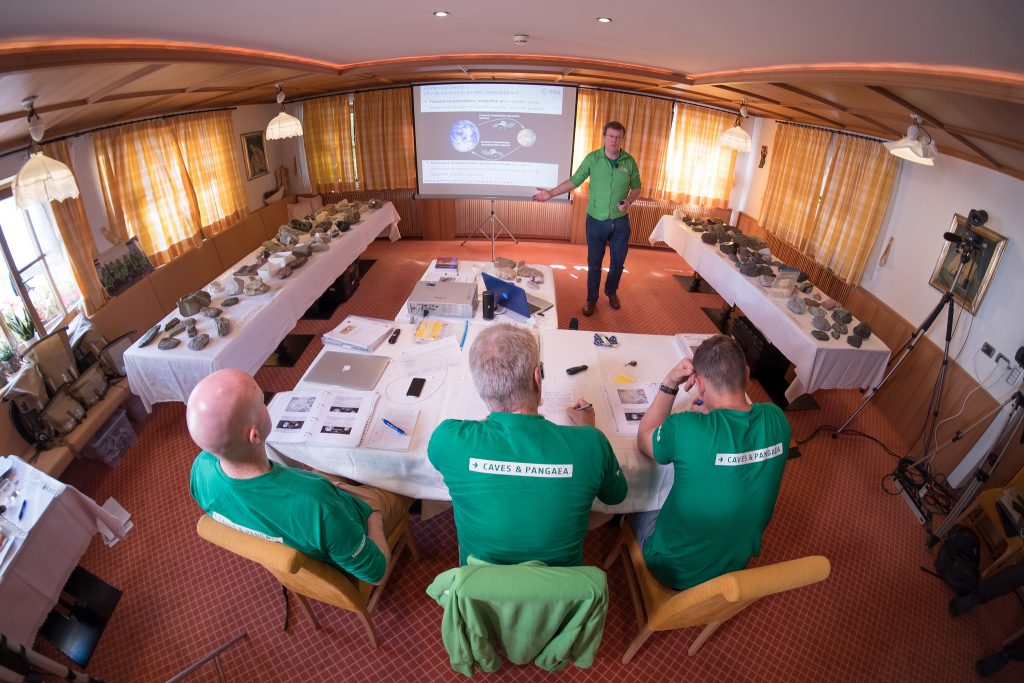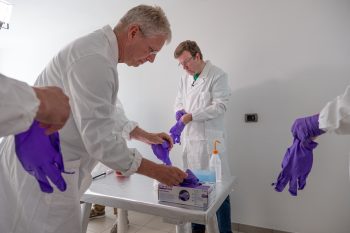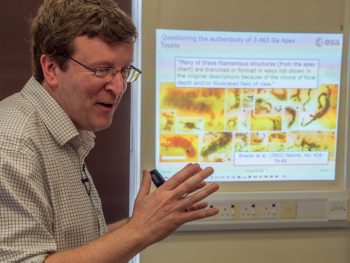To listen to him talking about life in the Universe is to be instantly hooked. Professor Charles Cockell, head of the UK Centre for Astrobiology, joins Pangaea’s team of instructors to teach about the origins and evolution of life in extreme environments.
Charles is convinced that astronauts need training to search for life. Explorers run the risk of contaminating samples even in apparently lifeless environments. “Knowing about the signatures and remains of life is essential to understand how their own activities could contaminate these samples,” he says.
He teaches astrobiology, a science that can help us identify habitats for life on other planetary bodies. During the second week of the course, he taught Pangaea participants the best practices to collect samples without contaminating them.
In an improvised minilab, Charles explained that most contamination comes from touching instruments and surfaces. “We don’t want to contaminate the Moon or Mars with microbes from Earth and we have to take precautions about bringing samples back to Earth,” he warns.
“For me Pangaea is a great opportunity to advance the human exploration of space. We are bringing astrobiology into the skills of astronauts so that one day they may go beyond Earth and carry out biology experiments and even search for life,” Charles adds.
Last year he ventured a kilometre beneath the surface in a UK mine with ESA astronaut Matthias Maurer to test methods of searching for life underground. Scientists and instrument specialists ventured deep below to study microorganisms in dark, saline environments.
“It is a great privilege to have the opportunity to effectively use
astrobiology as part of human space exploration and to work with ESA to make that happen,” he concludes.
To know more about Charles’ views on life on Mars, read his earlier post on the blog.




Discussion: no comments